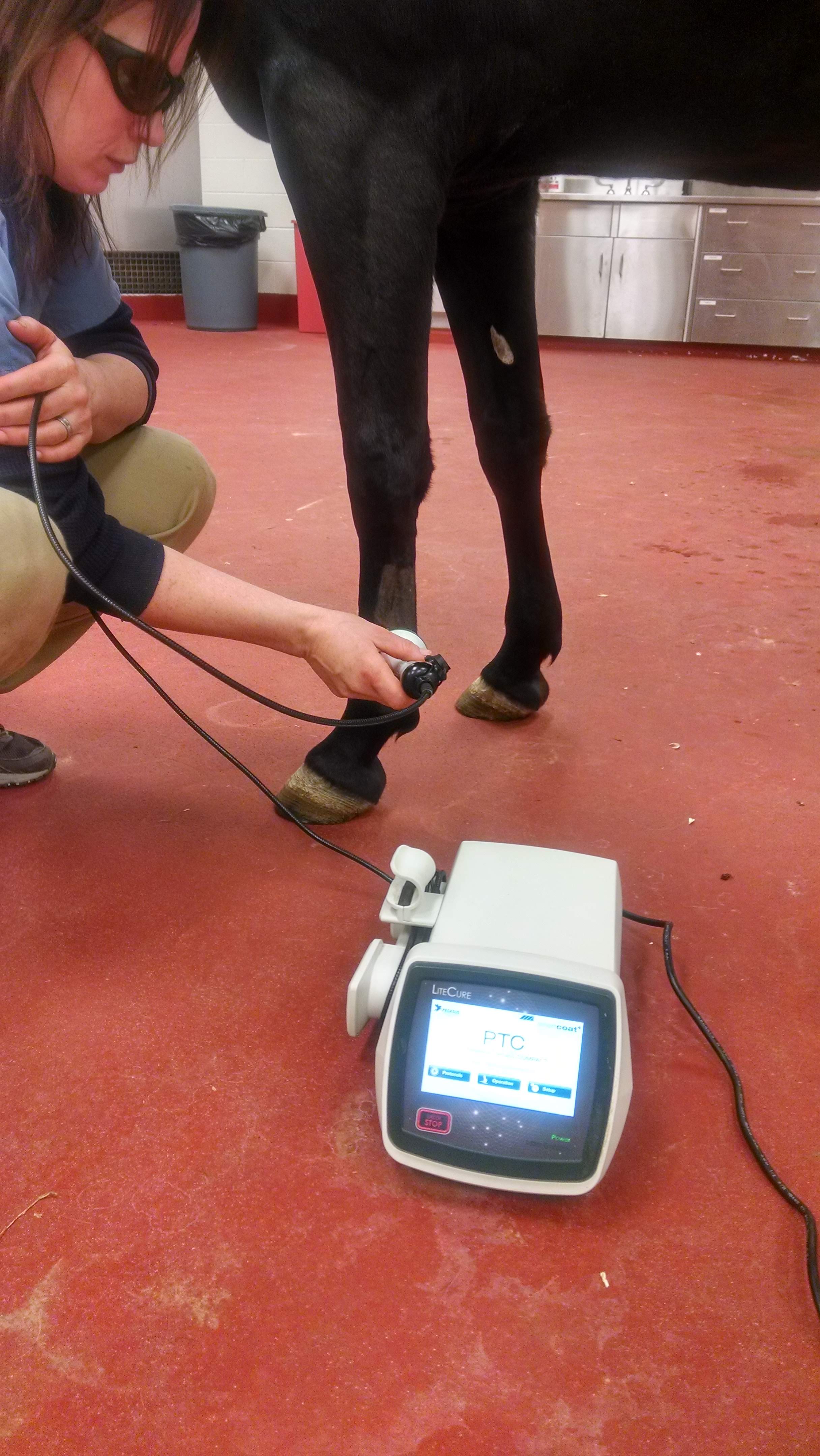Evaluating the Efficiency of Laser Therapy in Horse Treatment for Injury Rehab
The analysis of laser treatment's effectiveness in equine injury rehabilitation pivots on multiple aspects, consisting of healing time, pain reduction, and tissue regrowth. Veterinarians regularly observe remarkable outcomes with laser treatment compared to standard techniques, placing it as a crucial aspect in equine care. Equine Therapy.

Recognizing Laser Therapy
Laser therapy has actually come to be a pivotal tool in vet medication, specifically in the treatment of equine problems. Recognized for its non-invasive nature and efficacy, laser therapy entails the application of details wavelengths of light to stimulate tissue repair service and lower inflammation. This healing modality is significantly preferred for its ability to increase the healing process in steeds dealing with a selection of musculoskeletal injuries and persistent problems.
The main mechanism behind laser treatment is its capability to improve mobile functions. When laser light permeates the skin, it is taken in by mitochondria, the giant of cells, which causes raised production of adenosine triphosphate (ATP) This biochemical energy boost promotes mobile repair and regeneration. Furthermore, laser treatment promotes vasodilation, improving blood circulation and oxygen delivery to broken cells, thus quickening healing.
In equine medicine, laser therapy is especially helpful for conditions such as tendonitis, osteo arthritis, and wound healing. The technique is lauded for its pain-relieving buildings, permitting equines to gain back wheelchair and feature a lot more quickly. Veterinarians likewise appreciate its marginal adverse effects compared to other therapy modalities, making it a dependable and risk-free option for equine treatment.
How Laser Treatment Functions
To understand how laser therapy works, it is important to explore the communication in between light power and biological cells. Laser treatment, likewise referred to as Low-Level Laser Treatment (LLLT) or photobiomodulation, uses particular wavelengths of light to penetrate cells and stimulate mobile procedures. The system depends upon the absorption of photons by cell chromophores, mostly within the mitochondria, which are important for power production.
Upon absorption, these photons activate a series of biochemical modifications, improving mitochondrial function and causing boosted adenosine triphosphate (ATP) production. This rise in ATP increases mobile metabolism, advertising cells repair and regeneration. Furthermore, laser therapy modulates inflammatory reactions by impacting cytokine levels and reducing oxidative stress and anxiety, thereby alleviating pain and swelling.
An additional substantial facet of laser therapy is its duty in improving microcirculation. The treatment promotes vasodilation, boosting blood circulation and oxygen distribution to damaged cells. This facilitates the elimination of cellular particles and sustains the expansion of fibroblasts and collagen synthesis, important for wound healing.
Scientific Evidence
The effectiveness of laser therapy in equine therapy has been confirmed with various professional research studies, showcasing its therapeutic possible across a variety of problems. A research carried out by Turner et al. (2012) showed that steeds treated with low-level laser therapy (LLLT) for tendon injuries showed accelerated recovery contrasted to those receiving traditional treatments.
Similarly, research by Johnson and coworkers (2015) concentrated on equine muscle injuries, disclosing that laser therapy dramatically sped up muscular tissue fiber regrowth and minimized muscle mass stiffness. Professional analyses have revealed that laser treatment can reduce persistent conditions such as osteo arthritis.
Veterinarian Insights
Veterinary experts have actually significantly acknowledged the worth of laser treatment in equine treatment, mentioning both empirical evidence and direct experience. Dr. Jane Smith, a leading equine vet, keeps in mind that laser therapy has shown impressive effectiveness in lowering inflammation and accelerating tissue repair service.
Vets additionally appreciate the versatility of laser therapy. It can be used for a wide variety of problems, from superficial injuries to much deeper musculoskeletal injuries. Dr. Emily Brown highlights its energy in treating conditions like tendonitis and osteoarthritis, where standard treatments typically fail. She explains that laser therapy can be tailored to the particular demands of each steed, guaranteeing ideal results.

Practical Considerations
A crucial aspect of executing laser treatment in equine therapy involves comprehending the functional factors to important source consider that ensure its efficacy and security. It is crucial to select the suitable laser gadget, as numerous kinds vary in wavelength, power, and penetration depth (Equine Therapy). Veterinarians need to be fluent in these criteria to customize therapy protocols efficiently per injury kind
Moreover, the frequency and duration of laser therapy sessions require mindful planning to maximize therapeutic benefits while reducing any type of prospective negative impacts. Constant surveillance of the steed's action to therapy can lead required modifications in the treatment program. Developing a safe and regulated atmosphere during therapies is also vital to avoid accidental exposure to laser exhausts, which can damage both the steed and the trainer.
Training and certification of personnel administering laser therapy are critical to ensure proper method and to copyright safety and security requirements. Additionally, keeping accurate documents of each session, including laser setups and observed look what i found results, is essential for examining the overall efficiency of the treatment and for making data-driven decisions.
Verdict
Laser treatment has actually emerged as Going Here an effective technique in equine injury rehab, supplying substantial benefits in healing time, discomfort alleviation, and cells healing. For ideal outcomes, continual monitoring and individualized treatment procedures remain important in leveraging the complete capacity of laser treatment in equine treatment.